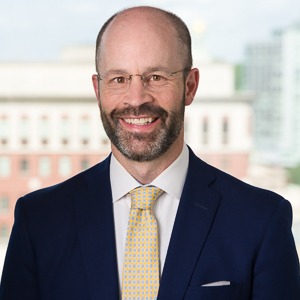Federal Rule of Civil Procedure (“FRCP”) 45(c) restricts federal courts’ powers to compel testimony from a third-party witness in civil litigation to locations: (1) “within 100 miles of where the person resides, is employed, or regularly transacts business in person;” or (2) within the state of residence, employment, or regularly transacted business if the person is a party or party’s officer and compliance would not incur substantial expense. Fed. R. Civ. P. 45(c)(1). But does the “100-mile” rule still have meaning in an era of remote depositions and appearances? Ten years ago, the Southern District of New York (“SDNY”) strictly construed FRCP 45(c) and held it applicable to videoconference depositions in the same way as in-person depositions. In a recent decision, the Ninth Circuit Court of Appeals became the first appellate court to weigh in on this issue, agreeing with SDNY that federal courts cannot compel witnesses living outside Rule 45(c)(1)(A)’s 100-mile boundaries to testify remotely.
The SDNY Approach
In the 2014 case of Ping-Kuo Lin v. Horan Capital Management, LLC, Judge Stanton held that Rule 43(a) “does not operate to extend the range or requirements of a subpoena” and could not be used to compel videoconference testimony from over 100 miles away. Multiple post-COVID-19 decisions have followed this approach, notwithstanding the proliferation of remote proceedings in the federal courts. Thus, in 2021, Judge Rakoff held that “[t]o avoid Rule 45(c)’s geographical limitations, the Court would have to conclude that testimony via teleconference somehow moves a trial to the physical location of the testifying person.” Broumand v. Joseph, 522 F.Supp.3d 8, 23–24 (S.D.N.Y. 2021). Several other SDNY judges have similarly refused to deviate from Rule 45(c)’s plain language and grant themselves “the unbounded power to compel remote testimony from any person residing anywhere in the country.” Broumand, 522 F.Supp.3d at 24.
The Ninth Circuit Accords: Kirkland v. U.S. Bankr. Court for the Central District of California (In re Kirkland) 75 F.4th 1030 (9th Cir. 2023)
The Second Circuit has yet to weigh in on this issue and until recently no circuit court had done so. Enter the Ninth Circuit’s decision in In re Kirkland. The plaintiff, a Chapter 7 Trustee for the Central District of California, sued a trust run by a Mr. and Mrs. Kirkland. The Trustee subpoenaed the Kirklands to testify at trial. The Kirklands moved to quash, arguing that – because they lived in the U.S. Virgin Islands – the subpoenas violated Rule 45(c). The bankruptcy court denied the motion, holding that it could compel remote testimony under Rule 43(a). The Kirklands then petitioned the Ninth Circuit for a writ of mandamus quashing the subpoenas.
The Ninth Circuit heard the petition to decide “whether Federal Rule of Civil Procedure 45(c)’s 100-mile limitation applies when a witness is permitted to testify by contemporaneous video transmission.” Its answer was a resounding “no,” adopting the same strict adherence to Rule 45(c)’s 100-mile provision as the SDNY line of cases. The appellate court offered many reasons for its holding. The FRCP Advisory Committee Notes imply that the geographic limit applies even for remote testimony. If there were a remote testimony exception, Rule 45(d)(3)(A)(ii)’s requirement that courts quash subpoenas beyond Rule 45(c) would become a nullity. The Trustee’s argument that the place of compliance is wherever the witness testifies contravenes “Rule 45(c)’s plain language that trial subpoenas command a witness to ‘attend a trial.’” And if the subpoena’s place of compliance moved “from the courthouse to the witness’s location, there would be no reason to consider a long-distance witness ‘unavailable’” under Rule 32(a)(4).
Alternative Approaches
In the Kirkland opinion, the Ninth Circuit acknowledged that several district courts have taken one of two alternative approaches to SDNY’s strict construction. In some courts, remote testimony beyond 100 miles is almost always granted because such a subpoena does not compel the witness to physically travel beyond Rule 45(c)’s proscribed distance. See, e.g., U.S. v. $110,000 in U.S. Currency, 2021 WL 2376019, at *3 (N.D. Ill. June 10, 2021); In re Xarelto Prods. Liab. Litig., 2017 WL 2311719, at *4 (E.D. La. May 26, 2017). In other courts, remote testimony over 100 miles is allowed on a showing of good cause and compelling circumstances. See, e.g., Off. Comm. of Unsecured Creditors v. Calpers Corporate Partners LLC, 2021 WL 3081880, at *3 (D. Me. July 20, 2021); In re DePuy Orthopaedics, Inc., 2016 WL 9776572, at *1–2 (N.D. Tex. Sept. 20, 2016). Indeed, this mediate path – remote testimony for good cause – may be the more popular position among other district courts. See Walsh v. Tara Construction, Inc., 2022 WL 1913340, at *2 (D. Mass. June 3, 2022)
Takeaway
In the post-COVID world, we have grown accustomed to conducting parts of our lives remotely. But litigators should be aware that courts may strictly construe the FRCP and refuse to enforce remote subpoenas beyond Rule 45(c)(1)(A)’s 100-mile limit. Despite the availability of remote testimony, in SDNY and now the Ninth Circuit, “[n]o matter where the witness is located, how the witness ‘appears,’ or even the location of the other participants, trials occur in a court.” Kirkland, 75 F.4th at 1045 (emphasis original). It will be interesting to see what other circuit courts do with this issue and whether the Second Circuit follows the Ninth Circuit’s lead or charts a different course.
















